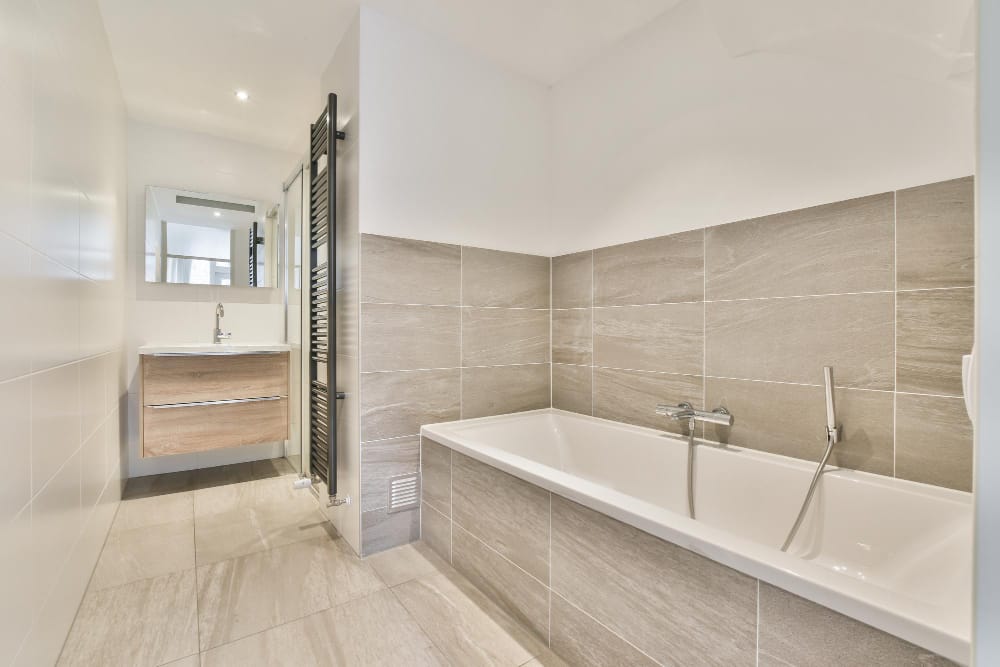Still tolerating a dated, inefficient bathroom? This fast-paced, Alison Victoria–inspired guide highlights five urgent problems homeowners face—and how a smart, well-planned bathroom remodel in Sacramento CA can solve them. From wasted space and energy-draining fixtures to mold-prone materials and outdated layouts, this article offers clear, high-impact solutions. Learn how to reconfigure for flow, install energy-efficient features, and future-proof your design with timeless materials and smart storage.
Follow Mia and Jordan’s journey as they refresh their kitchen with new countertops. Discover each smart step they took to create a stunning, Granite countertops offer timeless beauty and impressive durability. This formal, comparative guide evaluates granite against other materials to help you make an informed choice.space.
When it comes to selecting the right surface for kitchens and bathrooms, granite countertops have remained a favored choice among homeowners and designers for decades. However, it is important to consider granite within the broader landscape of available materials to determine whether it is the optimal choice for your project.
Drawing on the refined and thoughtful approach characteristic of Sarah Richardson, this article presents a comparative analysis of granite countertops, weighing their advantages and limitations alongside alternative materials.
Granite Countertops vs. Quartz Countertops
| Feature | Granite | Quartz |
|---|---|---|
| Composition | Natural stone | Engineered stone (natural quartz + resins) |
| Appearance | Unique, varied patterns | Uniform, customizable patterns |
| Durability | Highly durable; can chip with impact | Highly durable; slightly more resilient to impact |
| Maintenance | Requires periodic sealing | Virtually maintenance-free |
| Cost Range (per sq. ft.) | $50–100 | $60–120 |
Analysis:
Granite offers one-of-a-kind aesthetics but demands more care.
Quartz provides ease of maintenance at a slightly higher average cost.
Design Insight: Choose granite if you prioritize natural beauty and individuality; select quartz for consistency and convenience.
Granite Countertops vs. Marble Countertops
| Feature | Granite | Marble |
| Appearance | Bold, speckled, or veined patterns | Classic, subtle veining |
| Durability | Harder and less porous | Softer, more prone to staining and etching |
| Maintenance | Sealing recommended annually | Sealing required frequently |
| Best Use | Kitchens, high-traffic areas | Bathrooms, low-traffic areas |
Analysis:
Granite is better suited for kitchens due to its superior durability.
Marble, while elegant, requires a more delicate maintenance routine.
Design Insight: If you admire the sophistication of marble but live a “busy kitchen” lifestyle, granite offers a more forgiving alternative.
Granite Countertops vs. Solid Surface Materials (e.g., Corian)
| Feature | Granite | Solid Surface (Corian, etc.) |
| Durability | Very high | Moderate; scratches more easily |
| Aesthetic Appeal | Natural beauty | Manmade, customizable |
| Heat Resistance | Excellent | Moderate (requires trivets) |
| Repairability | Chips require professional repair | Minor scratches can often be sanded out |
Analysis:
Solid surfaces offer design flexibility and repairability, but lack the natural prestige of granite.
Granite delivers superior heat resistance and timeless appeal.
Design Insight: For a kitchen where formality and permanence are priorities, granite remains the preferred choice.
Summary of Key Considerations
Aesthetic Diversity: Granite’s natural beauty and unique slab variations remain unmatched.
Maintenance Requirements: Regular sealing is essential but manageable with proper care.
Durability: Excellent for daily wear and heat resistance, making it ideal for busy kitchens.
Cost: Competitive with other high-end surfaces, offering significant long-term value.
Sarah Richardson’s Philosophy: Thoughtful material selection must balance beauty, practicality, and long-term satisfaction. Granite often achieves that delicate equilibrium.
Final Thoughts
Granite countertops present a compelling blend of luxury, functionality, and individuality. When thoughtfully selected and properly maintained, they offer a lasting enhancement to the heart of any home.
For homeowners seeking a surface that delivers timeless style and enduring performance, granite remains a distinguished and worthy investment.
Call to Action
Interested in exploring the unique beauty and durability of granite countertops for your home? Our expert team can help you select the perfect slab to complement your vision.
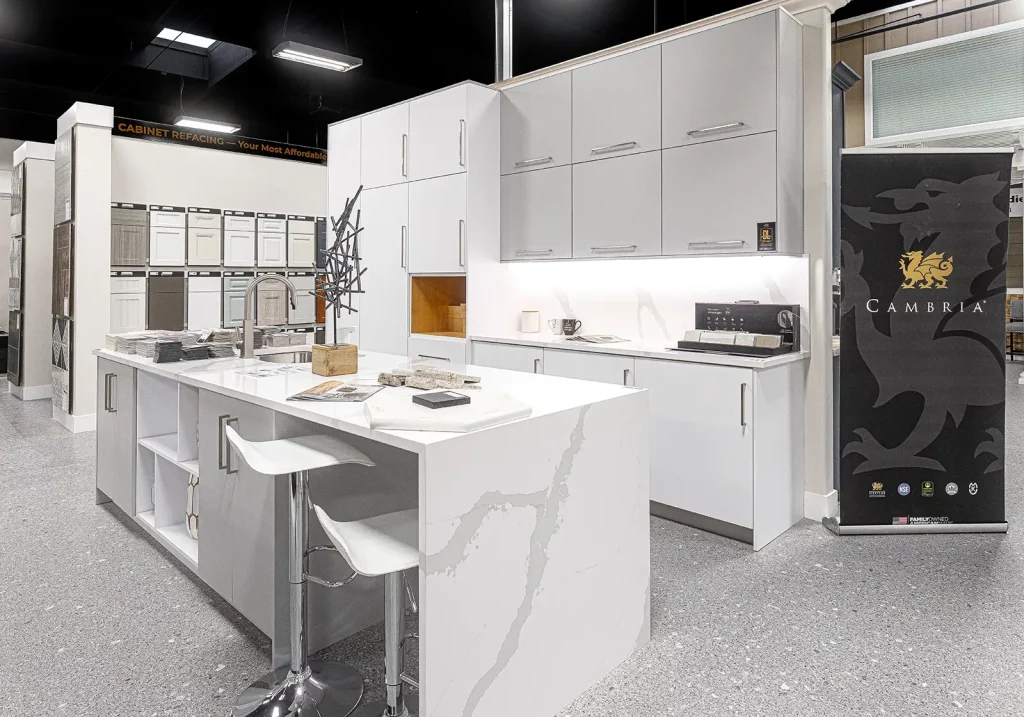
Follow Mia and Jordan’s journey as they refresh their kitchen with new countertops. Discover each smart step they took to create a stunning, personal space.
When Mia and Jordan decided it was time to update their kitchen, they quickly realized that nothing would make a bigger impact than new countertops. Their scratched laminate and outdated beige tiles weren’t just unattractive—they were dragging down the entire space.
Inspired by the idea that a home should tell your story (thanks, Nate Berkus!), they set out on a countertop journey that changed everything. Here’s how they did it—and how you can too.
Step 1: Recognize the Need for Change
Mia was baking one evening when her rolling pin snagged on a deep gouge in the countertop. Jordan said, “Maybe it’s finally time.”
If your countertops are stained, cracked, or just plain tired, it’s not just a cosmetic issue—it’s a sign your kitchen is ready for new life.
Step 2: Set a Budget (and Stick to It)
Mia and Jordan agreed upfront on a budget range—smart move.
They factored in material, installation, and a small buffer for unexpected costs.
They prioritized quality over trendiness, knowing timeless choices would serve them longer.
Nate’s Tip: Good design balances aspiration and practicality.
Step 3: Choose the Right Material
They explored all the options:
Quartz: Durable, non-porous, wide range of styles
Granite: Natural, beautiful, unique patterns
Marble: Elegant but high maintenance
Butcher Block: Warm and inviting, but requires regular care
Ultimately, they chose a soft, marble-look quartz—timeless, durable, and stunning.
Design Insight: Choose a material that matches your lifestyle, not just your Pinterest board.
Step 4: Select a Color and Finish
Instead of going ultra-modern or ultra-traditional, they picked a neutral tone that bridged both styles—a subtle veined white with a soft matte finish.
Key Detail: The finish matters. Matte or honed surfaces feel modern and forgiving. High-gloss finishes can look luxurious but show every fingerprint.
Step 5: Plan for Installation
Professional installation was non-negotiable.
The team templated the counters precisely.
They scheduled demo and installation to minimize kitchen downtime.
They prepared by clearing everything—yes, everything—off their old counters.
Pro Move: Investing in experienced installers made the difference between “good enough” and “absolutely perfect.”
Step 6: Accessorize Thoughtfully
New countertops deserve beautiful accessories. Mia and Jordan updated their backsplash with handmade tiles and chose a few simple, elegant items—like a marble fruit bowl and brushed brass faucet—to finish the look.
Nate’s Design Wisdom: Less clutter, more impact. Let your materials shine.
Final Thoughts
Mia and Jordan’s kitchen wasn’t just upgraded—it was transformed into a space that felt authentically them. Elegant, durable, personal.
Nate Berkus would say: The best rooms tell your story—and in this case, the story started with the perfect countertops.
Call to Action
Ready to start your own countertop transformation? Our team can help you choose the right material, style, and finish—and bring your dream kitchen to life.
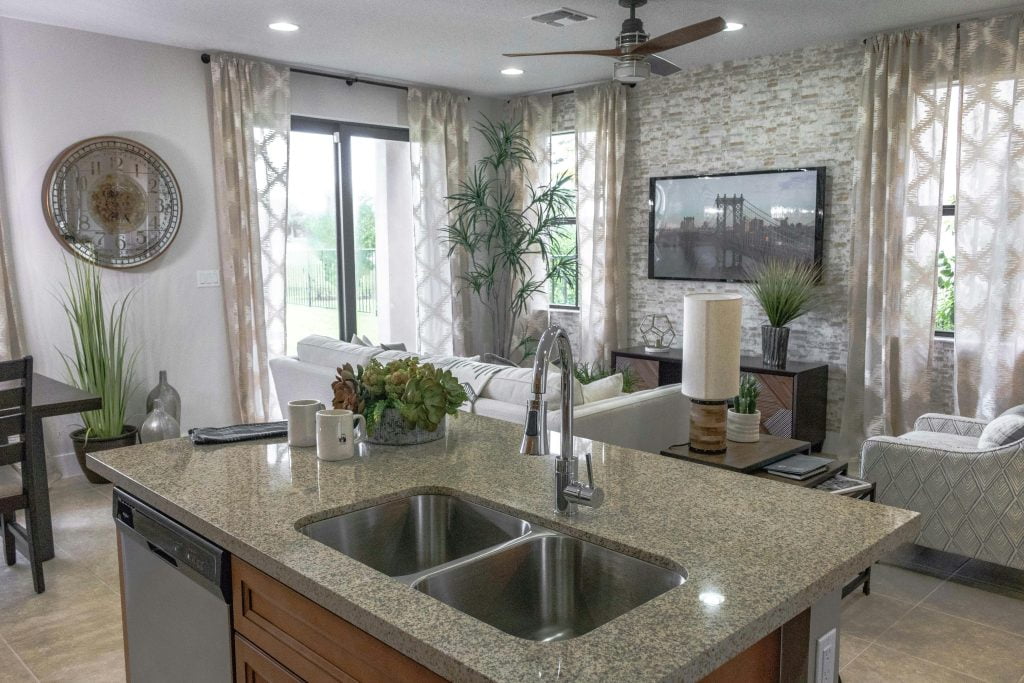
Follow Sam and Laura’s real-life renovation story and learn why investing in high-quality wall surrounds is essential for lasting beauty, health, and home value
When Sam and Laura bought their first home, they were excited to make it their own. But like many older houses, the bathroom was… less than inspiring. Cracked tile, discolored grout, and that musty smell they couldn’t quite scrub away. It didn’t just look bad—it felt like a health hazard.
They knew it was time to replace their wall surrounds. The only question was: how?
The Warning Signs
During a weekend cleaning spree, Laura noticed soft spots behind the shower tile. Sam, a fan of home improvement shows, immediately knew: this wasn’t just cosmetic. Moisture had seeped behind the walls. If they didn’t act fast, they could be dealing with major water damage—or even mold.
Mike Holmes’s Philosophy: If you’re going to do something, do it right. Ignoring the signs only leads to bigger (and more expensive) problems later.
Making the Right Choice
Laura wanted something beautiful. Sam wanted something durable. They both wanted to be smart about their investment.
After researching options, they chose:
Acrylic wall surrounds: Seamless, waterproof, and resistant to mold and mildew.
Solid surface panels: Sleek, modern, and easy to clean.
Professional installation: Because cutting corners wasn’t an option.
The goal wasn’t just to make it “look better.” It was to create a bathroom that was healthy, strong, and built to last.
Persuasion Point: Your bathroom shouldn’t just survive—it should thrive, year after year.
The Transformation
Within a few days, their tired bathroom became a space they loved. Bright, fresh, easy to maintain—and solid behind the scenes.
No more grout to scrub.
No more leaks or water worries.
And no more “holding their breath” every time they stepped into the shower.
Sam and Laura didn’t just remodel their bathroom. They invested in peace of mind.
Mike Holmes would approve: They made it right, not just right now.
Final Thoughts
Replacing wall surrounds isn’t just about updating a tired look—it’s about protecting your home, your health, and your investment. When you choose quality materials and expert installation, you’re not just fixing a problem—you’re building a better future for your home.
Call to Action
Ready to protect and beautify your bathroom the right way? Let our team help you choose and install high-quality wall surrounds—for a renovation you can trust for years to come.

Hardware upgrades offer an affordable and impactful way to refresh your home. From stainless steel handles to brass door knobs, the right hardware enhances style and functionality. Explore different materials, types, and design tips to create a cohesive look that suits your home’s aesthetic. Whether you go for DIY or professional installation, hardware upgrades make a lasting impression.
The first time I stepped into Emily’s kitchen, I saw it for what it was—not what it had become.
There were the usual signs of wear: discolored counters, outdated oak cabinets, and lighting that cast a cold, uneven glow. But beneath the surface, the bones were good. It just needed someone to unlock its elegance. To soften the edges. To return character to a space that had gone flat.
“It used to feel like the heart of our home,” Emily told me. “But it hasn’t in years.”
So we got to work.
Starting with one search: remodel kitchen contractors near me.
A Vision Rooted in Warmth
Emily didn’t want flash. She wanted a sanctuary. A space where modern luxury met timeless charm. So, we started with the element that defines everything else: cabinetry.
Her old upper cabinets made the room feel small and closed. We replaced them with custom, ceiling-height kitchen cabinet upgrades in soft white with brushed champagne hardware. The doors? Seamless, with a satin finish that caught morning light like silk.
The lower cabinets were finished in a warm stone-gray with elegant detailing—a perfect contrast. Every drawer opened with intention. Every shelf was built with purpose. Beauty that didn’t just sit there—it worked.
Marble, Brass & Everything Thoughtful
We wrapped the new island in book-matched marble—a slab chosen not just for color, but movement.
Veins ran softly across its face like watercolor, grounding the room without overpowering it.
Above it? Three pendant lights in aged brass. Underfoot? White oak planks arranged in a herringbone pattern that whispered luxury with every step.
And everywhere, there was balance. Texture. Flow.
A space that wasn’t just beautiful—it felt designed for her life.
Craftsmanship That Speaks
The difference came down to the team.
The remodel kitchen contractors near me that Emily chose weren’t just builders. They were artists in denim and tool belts—who knew that every hidden hinge, every grout line, every cabinet reveal was an opportunity to create something exceptional.
That’s the magic of great renovation. Not perfection—but intention.
Not just trend—but taste.
The Reveal: A Return to Ritual
When we finished, Emily stood in the kitchen silently.
She walked to the sink. Ran her hand along the island. Looked up at the pendant lights.
“It feels like me again,” she whispered.
And that’s the true luxury, isn’t it? Not the price tag.
Not the name-brand appliances.
But a kitchen that welcomes you. Inspires you. Holds space for the way you live.
Final Word from Alison
If your kitchen doesn’t reflect who you are—or how far you’ve come—it’s time.
Start with someone who listens. Someone who gets that a kitchen isn’t just a place to cook. It’s where life happens.
Begin your journey with the best remodel kitchen contractors near me, and let every detail—like a smart kitchen cabinet upgrade—remind you what home is supposed to feel like.
Elegant. Effortless. Yours.

Discover unbeatable savings with Amazon liquidations. From affordable shopping to resale opportunities, these deals offer endless possibilities.

In today’s fast-paced shopping world, Amazon liquidations have emerged as a treasure trove for bargain hunters and entrepreneurs alike. These unique opportunities let you purchase surplus, returned, and overstock items at unbeatable prices, making it a perfect option for resellers or thrifty shoppers.
What Are Amazon Liquidations?
Amazon liquidations refer to the process where Amazon sells returned, unsold, or excess inventory at significantly reduced prices. These items are often bundled into pallets, offering a mix of categories like electronics, home goods, clothing, and more.
Why Choose Amazon Liquidations?
- Affordable Shopping: Products are sold at prices far below retail, ensuring maximum savings.
- Diverse Selection: Liquidation lots often contain a variety of items, catering to different needs.
- Resale Potential: Resellers can profit by purchasing and selling these items individually.
- Eco-Friendly: By buying liquidated goods, you contribute to reducing waste and promoting sustainability.
How to Access Amazon Liquidations
- Find Reliable Platforms: Research websites specializing in Amazon liquidations.
- Understand the Process: Items are typically sold as-is, so review listings carefully.
- Set a Budget: Determine how much you’re willing to invest in liquidation lots.
- Place Your Bid or Buy Directly: Many platforms allow you to bid on pallets or purchase them outright.
Tips for Successful Amazon Liquidations
- Know Your Needs: Choose categories that align with your personal or business interests.
- Inspect Descriptions: Pay attention to the condition and type of products in each lot.
- Start Small: For beginners, start with a smaller purchase to understand the process.
- Plan for Storage: Ensure you have space to store the items you buy.
Conclusion
Amazon liquidations offer a practical way to save money and access a wide range of products. Whether you’re looking to stock your store or simply enjoy discounted shopping, these liquidation deals are worth exploring. Take the leap and uncover the hidden gems waiting for you!

Hardware upgrades offer an affordable and impactful way to refresh your home. From stainless steel handles to brass door knobs, the right hardware enhances style and functionality. Explore different materials, types, and design tips to create a cohesive look that suits your home’s aesthetic. Whether you go for DIY or professional installation, hardware upgrades make a lasting impression.
When it comes to home improvement, hardware upgrades might seem like a small detail, but they hold the power to transform a space dramatically. From updating kitchen cabinet handles to installing new door knobs, thoughtful hardware choices can enhance both the functionality and aesthetic of your home. With a variety of options available, deciding on the right upgrade requires careful consideration of material, style, and budget.
Why Upgrade Your Hardware?
Refresh Your Style
Replacing outdated hardware instantly modernizes your space. For example, swapping old brass handles for sleek matte black pulls can give your kitchen or bathroom a fresh, contemporary look.Improve Functionality
Upgrades can also enhance usability. Soft-close hinges, for instance, prevent slamming and extend the life of your cabinets.Affordable Transformation
Hardware upgrades are a cost-effective way to make a noticeable difference without a full renovation.
Comparing Popular Hardware Materials
Stainless Steel
- Pros: Durable, rust-resistant, and versatile in design. Ideal for kitchens and bathrooms.
- Cons: Can be more expensive than other options.
Brass
- Pros: Timeless appeal, available in polished or brushed finishes.
- Cons: Requires regular maintenance to retain its shine.
Zinc Alloy
- Pros: Budget-friendly and available in a wide range of styles.
- Cons: Less durable than stainless steel or solid brass.
Ceramic
- Pros: Unique, decorative designs perfect for vintage or eclectic aesthetics.
- Cons: Prone to chipping over time.
Wood
- Pros: Warm and natural, great for rustic or traditional spaces.
- Cons: Requires proper sealing to prevent wear.
Types of Hardware to Consider
Cabinet Knobs and Pulls
These small fixtures have a significant visual impact. Knobs are best for traditional spaces, while pulls offer a streamlined look.Door Handles and Knobs
Switching to lever-style handles can add a touch of sophistication and improve accessibility.Hinges
Opt for concealed or soft-close hinges to modernize your cabinets.Hooks and Racks
Add utility and charm with decorative hooks for coats, towels, or keys.Drawer Slides
Upgrading to smooth-glide or soft-close drawer slides enhances functionality.
Matching Hardware to Your Home Style
Modern
- Best Fit: Stainless steel or matte black finishes.
- Design Tip: Choose minimalist designs with clean lines.
Traditional
- Best Fit: Brass or antique bronze.
- Design Tip: Look for intricate detailing or classic shapes.
Rustic
- Best Fit: Iron or distressed wood.
- Design Tip: Pair with reclaimed wood elements for a cohesive look.
Eclectic
- Best Fit: Ceramic or mixed materials.
- Design Tip: Experiment with colorful or patterned options.
Professional Installation vs. DIY
Professional Installation
Hiring experts ensures precise placement and proper installation, especially for complex upgrades like drawer slides or door hinges.DIY Approach
Smaller upgrades, like replacing cabinet knobs, are simple and cost-effective to do on your own. Ensure you measure accurately to avoid misalignment.
Quick Tips for Success
Measure Twice
Ensure new hardware matches the existing hole spacing or be prepared to drill new ones.Coordinate Finishes
Create a cohesive look by matching hardware finishes across the room.Test Usability
Check how the hardware feels in your hand—ergonomics matter for frequently used items.Mix Styles Cautiously
If mixing finishes or styles, keep a unifying element, like similar shapes or tones, to maintain balance.
The Lasting Impact of Hardware Upgrades
Upgrading your home’s hardware is a small investment with a significant return. Beyond enhancing visual appeal, it improves daily functionality and even adds value to your property. Whether you’re giving your kitchen a modern edge or refreshing your front door’s charm, hardware upgrades are a quick and effective way to elevate your living space.
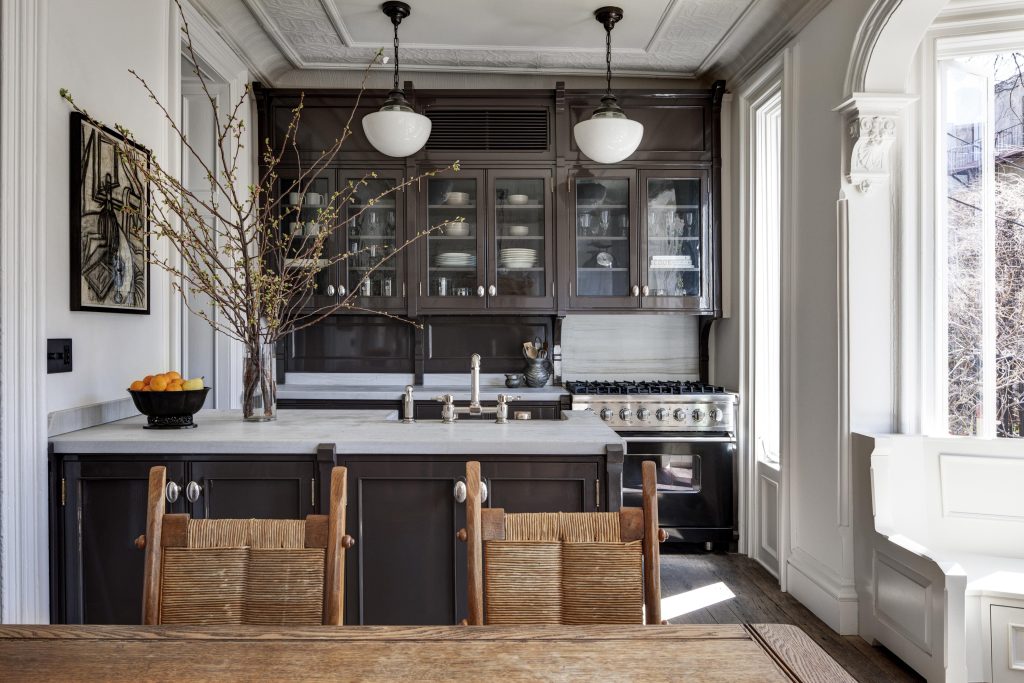
Minimalist home remodeling focuses on simplicity, quality, and functionality. Learn how to create serene, open spaces that enhance your home’s beauty and comfort.
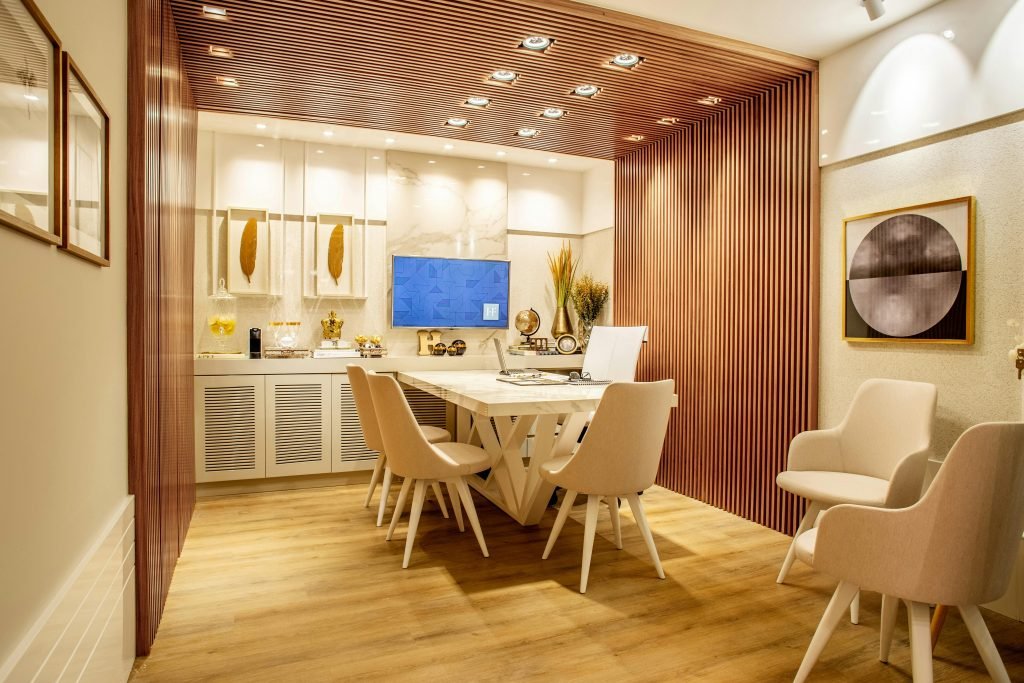
Home remodeling is not just about updating a few features; it’s about creating a space that feels like you. It’s easy to get lost in the trend-driven ideas that constantly appear on social media, but true home remodeling success lies in simplicity, functionality, and personalization. When done right, a home remodel can not only refresh your space but elevate the way you experience your home every day.
A minimalist approach to home remodeling focuses on simplicity and clean design. It’s not about stripping down to bare walls, but rather about removing unnecessary clutter and opting for a space that is both beautiful and practical. Here’s how you can transform your home with a minimalist, clean approach.
Why Choose Minimalism for Your Remodel?
Minimalism is all about embracing the essentials. It involves creating spaces that feel open, calm, and organized, without being overly decorated or cluttered. When remodeling your home with a minimalist mindset, you’re choosing to prioritize quality over quantity, making your living spaces feel more peaceful and functional.
Clarity and Calm
By focusing on the basics, a minimalist home reduces distractions. The clean lines and neutral colors used in minimalist design help create a serene atmosphere, where your mind can relax and your home feels more inviting.Functionality Over Excess
Minimalism emphasizes functionality. Every piece in your home should have a purpose. There is no room for unnecessary items or items that don’t serve a functional purpose.Easier Maintenance
With fewer items and clutter, minimalist homes are easier to clean and maintain. This makes daily life more convenient and less stressful.
Key Elements of Minimalist Home Remodeling
To achieve a minimalist design, start by simplifying the elements in your home. Here are a few ways to remodel with minimalism in mind:
Open-Concept Living Spaces
One of the cornerstones of minimalist design is creating open, fluid spaces. Walls can be removed or repositioned to create large, uninterrupted living areas. This openness not only improves the functionality of your space but also makes it feel more airy and expansive.Neutral Color Palette
A neutral color scheme is essential to achieving a minimalist look. White, beige, gray, and soft pastels create a calm, cohesive atmosphere and allow natural light to bounce around the room. Neutral tones also serve as a perfect backdrop for your furniture, art, and other design elements.Quality Over Quantity in Furniture
Choose pieces that serve a clear purpose and are made with quality craftsmanship. Opt for clean-lined, simple furniture that provides storage without taking up too much space. Avoid bulky, oversized pieces that make the space feel cluttered.Built-In Storage Solutions
In a minimalist home, everything needs a place. Built-in storage options, such as shelves, cabinets, and hidden drawers, are excellent for keeping things tidy and out of sight. These options allow you to keep your belongings organized while maintaining a streamlined appearance.Natural Materials and Textures
Minimalist design embraces natural materials, like wood, stone, and metal. Using these materials not only adds warmth and texture but also ties your home to nature. Whether it’s a wooden floor, marble countertop, or a stone accent wall, these natural elements will enhance the simplicity of your home.Lighting That Enhances the Space
Proper lighting is key in minimalist design. Large windows, skylights, and strategically placed light fixtures can brighten up the space and bring in natural elements. Avoid over-the-top chandeliers or ornate fixtures, and instead focus on subtle lighting that complements the room’s clean lines.
How to Keep the Minimalist Vibe After Remodeling
After your remodel, maintaining a minimalist home can be just as important as the design itself. Here are a few tips to keep the clean and clutter-free vibe alive:
Declutter Regularly
Keep your space free from unnecessary items. Regularly evaluate what you use and what you can get rid of. If something no longer serves a purpose, consider donating or recycling it.Mindful Decorating
When it comes to decoration, less is more. Choose artwork or decorative pieces that have meaning or that enhance the space, rather than filling your home with things that feel extraneous.Invest in Quality Items
Quality items, whether it’s furniture, decor, or even kitchenware, will elevate your home without needing to clutter it. Long-lasting, well-made pieces are worth the investment and contribute to the overall minimalist aesthetic.Focus on Functionality
Always consider whether an item is functional and fits into your space before bringing it in. If it doesn’t serve a purpose or add to the overall design, it’s best to leave it out.
Conclusion: Simplifying Your Home for a Better Life
A minimalist approach to home remodeling allows you to create a space that’s clean, simple, and functional. By focusing on quality materials, open spaces, and timeless design, you can transform your home into a sanctuary that feels welcoming and relaxed. The key is to prioritize functionality, keep things uncluttered, and choose only the essentials—this is what will make your remodel stand the test of time.
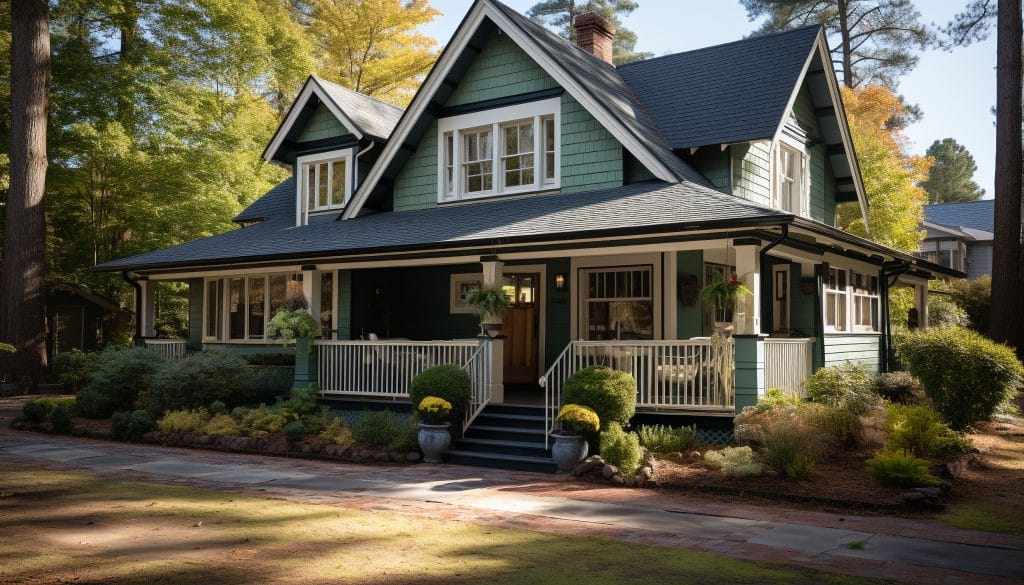
Kitchen and bathroom remodeling is a great way to improve your home’s value and functionality. With careful planning and expert craftsmanship, you can create a stylish, functional space that enhances your daily life. From choosing the right materials to budgeting for the project, learn how to make the most of your remodeling investment.
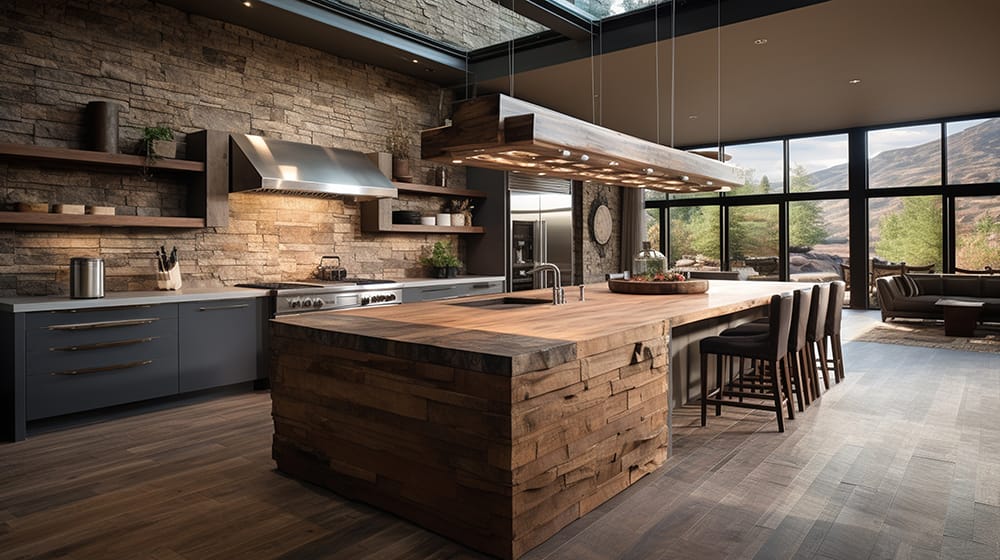
When it comes to improving your home, few things offer as much value as kitchen and bathroom remodeling. Whether you’re updating old fixtures or completely transforming the layout, these spaces have a significant impact on your home’s functionality and overall aesthetic. As a contractor with years of experience, I can tell you that remodeling these rooms requires thoughtful planning, quality craftsmanship, and attention to detail.
Why Remodel Your Kitchen and Bathroom?
Remodeling your kitchen and bathroom can completely elevate your home’s value, making it more comfortable, functional, and appealing. These areas are essential to daily life, and a well-designed space can significantly improve your quality of living. Whether you’re cooking in your kitchen or relaxing in your bathroom, you’ll want these spaces to be stylish and functional.
A kitchen remodel offers a chance to update outdated appliances, optimize storage, and create an environment that encourages cooking and socializing. On the other hand, a bathroom remodel allows you to transform your space into a sanctuary with new fixtures, modern tiling, and improved lighting.
Planning Your Remodeling Project
Before you begin, it’s important to have a solid plan in place. Start by defining your goals for the space. Are you looking for more storage in your kitchen? Maybe a spa-like atmosphere in your bathroom? Your goals will dictate the design choices, including the materials, layout, and fixtures.
Working with a professional designer or contractor can help you make the most of your space and budget. These experts can guide you on the best materials and design elements based on your style preferences and lifestyle needs.
Key Features for a Successful Remodel
Kitchen Remodel:
When remodeling your kitchen, start by choosing the right cabinetry, countertops, and flooring. Modern cabinetry offers both style and functionality with ample storage and easy access. Countertops should be durable and resistant to stains and scratches, with options like granite, quartz, or butcher block being popular choices. Don’t forget to install energy-efficient appliances, which save you money in the long run while enhancing the overall appeal of your kitchen.
Bathroom Remodel:
For the bathroom, consider upgrading your shower or bathtub. Installing a larger shower with modern tiles or a luxurious freestanding tub can give your bathroom a spa-like feel. Replace outdated fixtures such as faucets and showerheads with stylish, water-efficient models. Proper lighting is also crucial, as it can enhance the space’s ambiance and functionality.
The Remodeling Process
The remodeling process typically starts with demolition. Once the old fixtures and finishes are removed, the contractor will make any necessary structural changes, such as plumbing or electrical adjustments. Afterward, the new elements are installed, beginning with the essential parts like plumbing and cabinetry. Finally, finishing touches such as paint, trim, and flooring are added, bringing the whole space together.
Budgeting for Your Remodel
A well-planned remodel can significantly increase your home’s value. However, it’s essential to set a realistic budget before you begin. Kitchen and bathroom remodels can be costly, but with the right planning, you can get a high return on your investment. Be sure to allocate funds for unexpected expenses, as remodeling often uncovers underlying issues that need to be addressed, such as plumbing or electrical repairs.
Conclusion
Kitchen and bathroom remodeling projects require careful planning, skilled craftsmanship, and a clear vision. With the right approach, these remodels can transform your home, increase its value, and improve its overall functionality. Whether you’re looking to create a dream kitchen or a relaxing bathroom retreat, working with an experienced contractor will help you achieve the results you’re looking for.
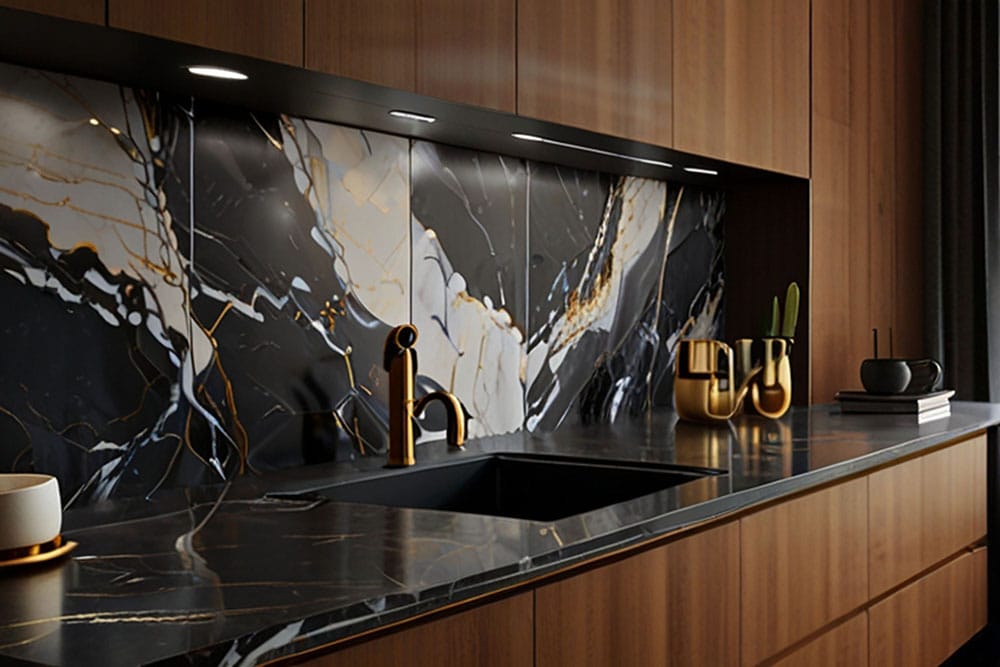
Selecting and installing siding can have a lasting impact on both the look and functionality of your home. With options like vinyl, fiber cement, wood, and metal, the right choice depends on your budget, design goals, and climate. In this article, Bryan Baeumler shares insights on different siding materials and key installation tips for a successful remodel. Whether you want the charm of wood or the resilience of fiber cement, get expert guidance to transform your home’s exterior and add lasting curb appeal.
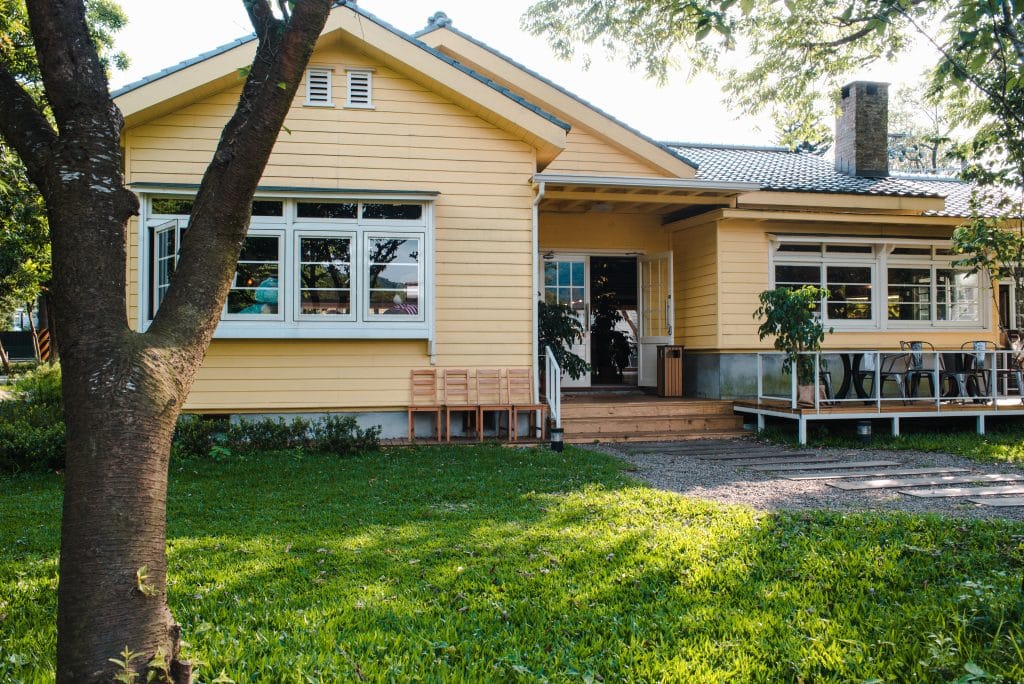
There’s something incredibly satisfying about seeing a home transform with the right siding. When it comes to enhancing curb appeal and adding protection, choosing and installing siding is one of the most impactful changes homeowners can make. In my years of experience working on home exteriors, I’ve learned that the best results come from balancing durability, style, and cost. Here, I’ll walk you through the key things to consider, so you can make an informed decision.
The Role of Siding in Home Design
Siding is more than just a protective layer; it’s the face your home shows to the world. Whether it’s the warmth of wood, the resilience of fiber cement, or the versatility of vinyl, siding plays a massive role in defining a home’s character. But selecting the right material is just the beginning. The color, texture, and installation technique all work together to create the finished look.
Many homeowners start their remodeling journey without knowing the various options, and I’ve often seen the excitement when they realize how much siding can add to their home’s overall look and feel.
Choosing the Right Siding Material
Selecting a siding material depends on your goals, budget, and location. Here’s a breakdown of some top options:
Vinyl Siding
One of the most popular choices, vinyl siding is affordable, low-maintenance, and available in a wide range of colors. It’s ideal for those looking for durability without breaking the bank. Over the years, I’ve seen vinyl improve significantly in quality, offering better insulation and increased resistance to cracking and fading.Fiber Cement Siding
Fiber cement is a top contender for those who value longevity and a natural wood look. Made from a blend of cement, sand, and cellulose fibers, it’s highly resistant to fire, pests, and rot. This material can mimic the appearance of wood and is especially popular in areas prone to extreme weather.Wood Siding
Nothing matches the warmth and charm of real wood. Cedar and redwood are excellent choices for wood siding as they naturally resist decay. However, wood siding does require maintenance to prevent rot and insect damage. I recommend wood for those willing to invest in upkeep for a classic, timeless look.Metal Siding
Metal siding, often made from aluminum or steel, is a great choice for modern or industrial-style homes. It’s highly durable, fire-resistant, and holds up well in extreme climates. Metal siding has become increasingly popular in recent years as a low-maintenance, eco-friendly option.
Key Considerations for Siding Installation
Quality installation is crucial for siding longevity. Poor installation can lead to water infiltration, warping, and more, which is why choosing an experienced professional is essential. In my experience, working with a contractor who understands your climate and material of choice ensures that your investment will last.
Here are some tips for ensuring proper installation:
Weather Barrier Protection
A weather barrier, like house wrap, is vital to protecting your home from moisture. It provides an extra layer of defense against water and wind, ensuring that your siding and home structure remain safe.Insulation
Insulated siding or an added layer of insulation underneath can improve your home’s energy efficiency. Insulation helps maintain indoor temperatures, reduces energy bills, and provides noise reduction.Sealing and Caulking
Pay attention to sealing and caulking around windows, doors, and corners. These areas are prone to leaks and drafts if not correctly sealed, which can compromise the effectiveness of the siding and lead to energy loss.
Real Stories of Siding Transformations
I once worked with a family who had recently purchased an older home in desperate need of an exterior facelift. The original wood siding was weather-beaten and full of cracks. We explored several options and settled on fiber cement, which provided them with the durability and look they wanted. The installation process took a couple of weeks, but the result was transformative—their home went from outdated to timeless, with a classic, elegant look. Not only was it visually appealing, but the new siding also offered the insulation and protection the family needed in their windy, coastal town.
Making Your Siding Project a Success
When planning a siding project, take time to review materials, consider energy efficiency, and work with a trusted contractor. Your home deserves the best protection, and quality siding adds both beauty and functionality.
From vinyl’s affordability to the endurance of fiber cement, every siding option has its unique appeal. Just remember that the installation process is as crucial as the material itself, so choose an expert who’ll do the job right.


